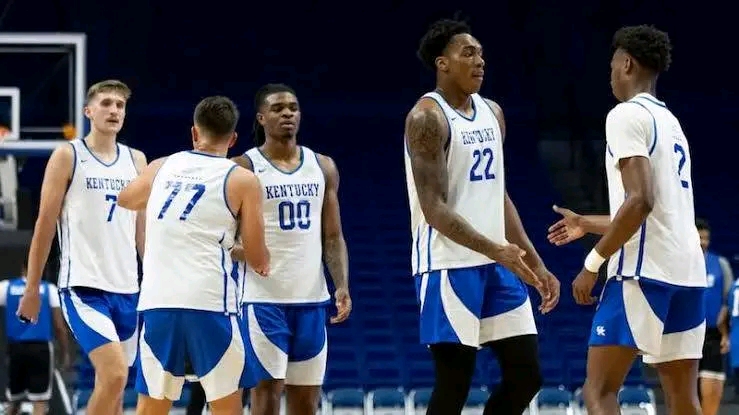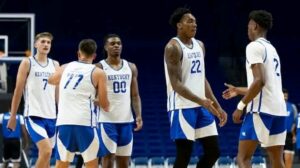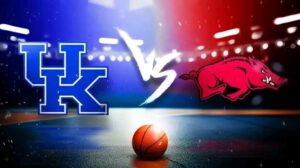
NIL System Under Scrutiny: Kentucky Sports Agent’s Controversial Tweets Ignite Debate

The Name, Image, and Likeness (NIL) framework, which revolutionized collegiate athletics by granting student-athletes the ability to profit from their personal brands, is facing renewed scrutiny. This scrutiny intensified following a series of controversial tweets made by a Kentucky-based sports agent that ignited a fierce debate among fans, athletes, and stakeholders in the college sports community. The impact of the agent’s remarks has raised essential questions about the effectiveness, fairness, and future of the NIL system as a whole.
When the NCAA officially allowed student-athletes to monetize their name, image, and likeness in July 2021, it was hailed as a landmark victory for fairness in college sports. For the first time, athletes could officially benefit financially from their talents, allowing them to secure endorsement deals, participate in business ventures, and gain additional income. While many celebrated this shift, it soon became evident that the implementation of the NIL system was rife with challenges and disparities among universities, leading to debates about equity and opportunity.
The Kentucky sports agent’s tweets served as a catalyst for these conversations. In their posts, the agent criticized certain schools for failing to adequately promote and support their student-athletes in securing NIL deals. The tweets suggested that some programs were not taking advantage of the wealth of opportunities available in the current landscape, thereby putting their athletes at a disadvantage compared to those at more proactive institutions. The assertions touched a nerve, prompting both support and backlash from various sectors of the college sports community.
Supporters of the NIL system lauded the agent for shining a light on the inequities that exist in college sports, arguing that the landscape is often uneven regarding which athletes receive lucrative opportunities. Many pointed out that high-profile programs or those residing in major markets can attract significantly larger sponsorships and endorsements, leaving smaller schools and their athletes behind. This disparity not only affects recruitment but also impacts the overall experience and financial security of student-athletes, particularly those who might not have the same platform or visibility as their peers in more prominent programs.
Conversely, critics of the agent’s comments expressed concern about the potential for stirring unnecessary drama within the collegiate realm. Some former athletes and coaches argued that focusing too heavily on financial incentives could jeopardize the integrity of college sports, turning institutions into mere training grounds for professional talent rather than fostering a commitment to student-athletes’ development. They contended that the focus should remain on education and athletic performance rather than merely making money.
The social media uproar brought forth a variety of perspectives, further complicating the discourse around NIL. Analysts began to dissect the implications of the agent’s remarks, considering how they could affect recruiting dynamics and overall perceptions of college programs. Some experts suggested that active engagement in the NIL landscape might now be more important than ever for maintaining institutional reputations and attracting top talent.
At the heart of the debate lies a deeper dilemma: the responsibility of universities and athletic departments to ensure that all athletes have equal access to NIL opportunities. As many student-athletes navigate the complexities of this new terrain, they often require guidance and support to effectively leverage their brands. The lack of standardized education surrounding NIL deals leaves some athletes vulnerable to exploitation or unwise financial decisions, emphasizing a critical need for mentorship programs and resources.
In light of the controversy, calls for clearer regulations and guidelines regarding NIL practices have intensified. Stakeholders across the college sports spectrum are increasingly advocating for the NCAA to take a more active role in overseeing and establishing frameworks that ensure fair competition and support for all student-athletes. Without a cohesive set of guidelines, the efficacy of the NIL system will remain questionable, perpetuating the disparities that current debates highlight.
As college athletics continues to evolve in the NIL era, the conversations sparked by the controversial tweets from the Kentucky sports agent underscore the ongoing challenges and opportunities present in this new landscape. The intersection of athleticism, education, and financial viability for college athletes is a multifaceted issue requiring thoughtful and deliberate actions from all stakeholders involved.
Ultimately, the NIL system has the potential to transform college sports for the better, but only if implemented with care and fairness. Bridging the gaps between various programs and ensuring equitable access to opportunities must be at the forefront of the ongoing discussions. The future of college athletics may very well depend on our ability to navigate these challenges in a manner that prioritizes the holistic development and well-being of student-athletes.







